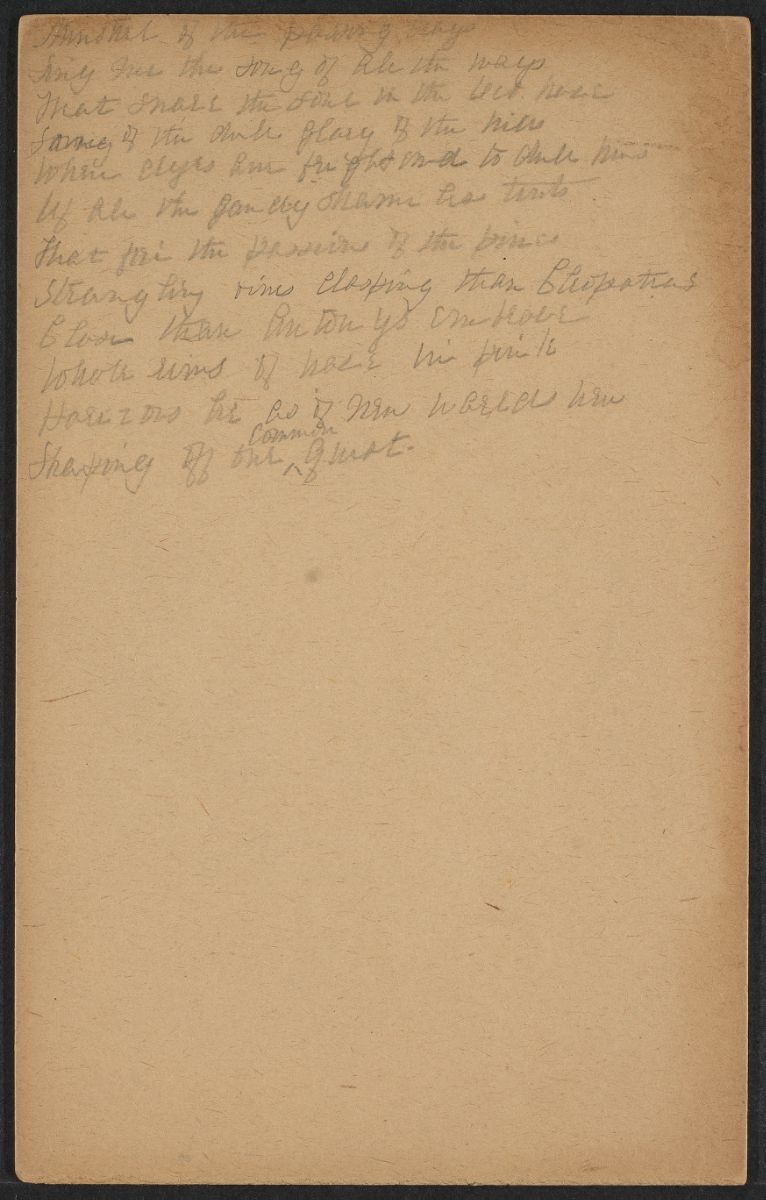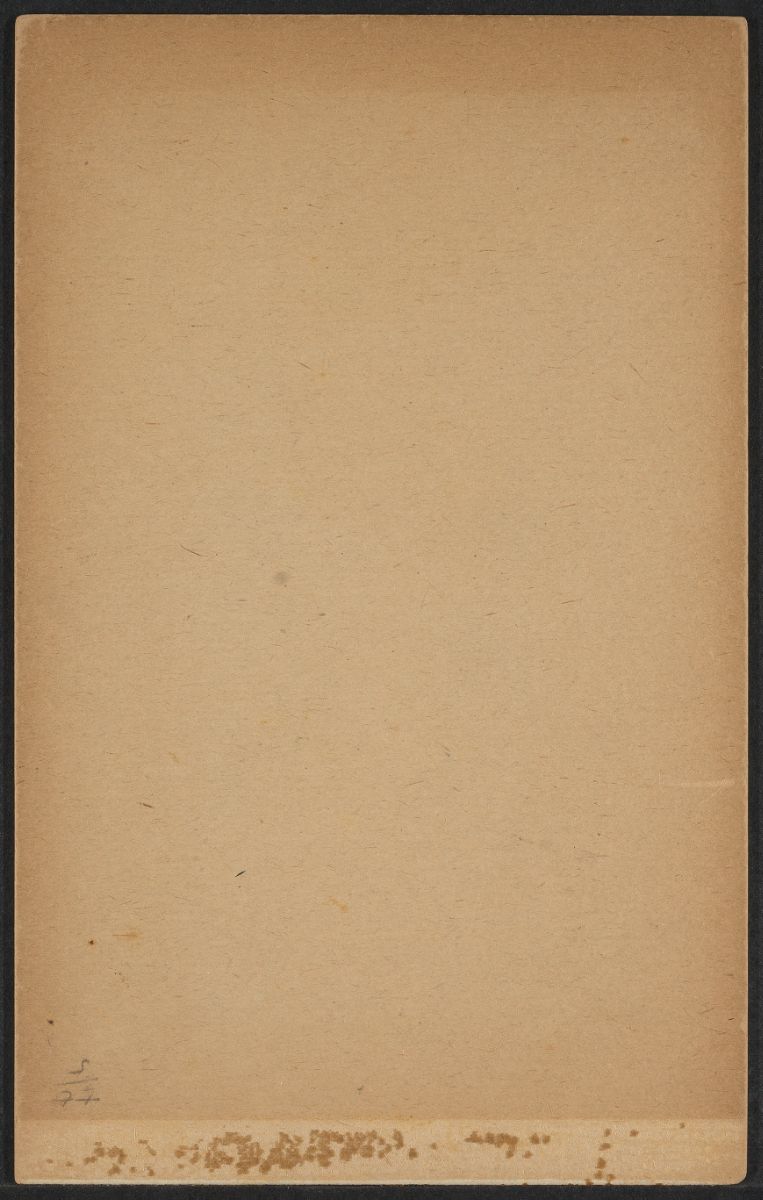<< Return to Poems
Minstrel of the Passing Days
< transcription recto, verso >
H bMS Am 1118.95, Box 9
In handwriting similar to William Hayes Ward letter dated February 8, 1891. Pencil, on cardboard. Appears to be a first or early draft -- more private and with a less determinate audience. The medium makes this poem one of the more difficult to transcribe. Our thanks to Kris Comment and Jason Rhody for helping us out with transcription.
This draft not only shows Susan to be an indefatigable writer, thinking about poetry constantly, but demonstrates how central Shakespearean references were to both Susan and Emily's poetics. Often, the two women seem to be "talking in Shakespeare". The use of the word "tints" in the sixth line echoes Emily's "The Tint I cannot take - / is best -" (FP 696), a poem that also references Cleopatra. Our thanks to Kris Comment for discovering this connection between the two poems.
A 12-line stichic in what may be very loose blank verse, though unprecedented in the known corpus. As it is almost certainly a first or very early draft, it's difficult to know what formalizing revisions, if any, she would have made. As with her unconventional "The robins chose to-day" fragment, this poem gestures at a process through which Susan formalizes her poetry, even translates her poetry from ms. with print and its prosody rules in mind. As her printed contemporaries evidence, it is a code maintained by the status quo and one not more rigorous or conventional than the norm.
The poem also echoes several other writings outside the corpus. As noted, a kind of staging of the verse, its invocation to a "minstrel," the allusion to Antony and Cleopatra (a romantic script Emily borrows to express her passion for Susan) recall Shakespeare, while the more dramatic language of "fire the passions," "dark glory of the hills" and "strangling vines" mix gothic romance with religious metaphors such as "snare the soul." This mosaic of influences may draw upon other analogs as well, including Romantic poets and nineteenth century poets Felicia Hemans, L.E.L., Emily Bronte, Elizabeth Barrett Browning and of course Emily, who may be the Minstrel to whom she appeals.
More experimental elements include her enjambment of the line and a fuller adoption of Emily¹s imaginative, mystical lexicon, her innovative syntactical-metrical economy and lineation as in "whole rims of haze in pink." "Haze," "rim" and "pink" are all repeated numerous times in the most sensual of Emily's corpus, suggesting as they do for both poets thresholds, borders, and the powerful metaphor of mystery and transformation expressed in terms of ever-changing light and atmosphere.





